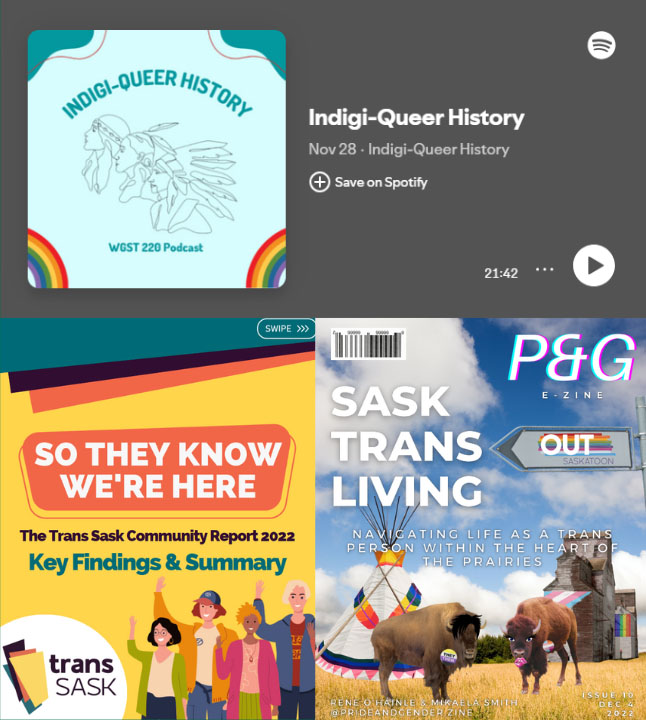
Queering the Classroom project aims to showcase student work, transform learning
Queering the Classroom is an open-access project from University of Saskatchewan (USask) Women’s and Gender Studies (WGST) led by Dr. Rachel Loewen Walker (BA’06, MA’08, PhD) with assistance from Andrew Hartman (BA’14, MEd’19, GTPC’24) and Harleen Arora (BComm’24). Loewen Walker recently spoke with University Relations about the scope and future of the project.
By Darla Read
UR: Briefly describe what “queering the classroom” is.
RLW: The project is an open access website that showcases and shares student work on topics related to gender, sexuality, and social justice. The use of “queering” here is in reference to the indicated topics, but it also references the way that queering is a verb: it refers to twisting, transforming, changing, and challenging. In this sense, the site provides an opportunity for students to share this important and transformative work related to gender and sexuality with a wider audience, while also foregrounding methods of thinking and learning that don’t adhere to more traditional academic formats (for example, essays, exams, equations). The site also pays homage to WGST classrooms at USask and across the country, which are known for recognizing and valuing creative and community-engaged assignments.
UR: Where did the idea come from?
RLW: The original grant was a joint effort between Marie Lovrod and I, and it was borne out of our mutual appreciation and support for creative, expansive, and community-engaged classroom assignments. I am also a strong advocate for open access to information, so I like the idea of sharing resources in ways that both teach and inspire. In WGST in particular, we provide space for a lot of unconventional classroom assignments such as art pieces, podcasts, films, interactive presentations, conferences, and many other formats. Every year I am sad that this work doesn’t have a clear path beyond the classroom, so Queering the Classroom serves as that pathway.
UR: What does this look like from a student’s perspective when it’s applied in a classroom?
RLW: Two of the classes I’ve taught quite regularly over the years include Queering the Terrain and a class called Social Justice in Action. Both classes include community intervention projects as their final assignments. So that means that students work in groups to carry out a project that engages with the wider community such as developing a podcast, creating an informational video, creating visual articles for an organization, or creating community-oriented presentations. When these projects are assigned, I let the students know that they can submit their projects to the site and then I remind them to submit at the end of term.
UR: How is the open access site used?
RLW: Instructors in any classroom can browse through the projects and then use them either as teaching tools (for example, the one about asexuality is really informative and could make a great presentation within a gender studies classroom) or they could use them as concrete examples for students when assigning similar types of assignments (as I do in classes). I find that when students see what others have created in the past, it inspires them to dream bigger and to really think about the ways that they can apply and expand their own learning.
UR: Who is the project designed for?
RLW: The project is designed for both students and instructors, as the projects can provide resources for classrooms and inspiration for student work. It is also designed for the larger community as each project represents an expression of knowledge mobilization – that is, finding ways to share ideas, concepts, and projects from the classroom with a wider audience and in a way that is more accessible to different types of learners and community members. The hope is that it provides an avenue for people to engage with the topics of gender, sexuality, and social justice in new ways – maybe building understanding and awareness as they do.
UR: Are there future plans to continue building the project?
RLW: Yes, you bet! The plan is to have a graduate student research assistant each year that can invite students to submit work and post material to the site so that it grows into a large and robust repository. We also hope to create a secondary space on the website where faculty and instructors can submit assignments, templates, and tools that they use in their classrooms in order to support creative, collaborative, and experiential learning.
If you want to submit something to Queering the Classroom, use this link: https://www.surveymonkey.ca/r/KSFCZS7

